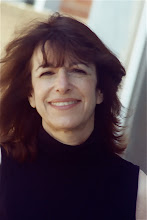
One of the most frequently cited examples of the use of child psychology in fiction picture books is Maurice Sendak's Where the Wild Things Are. Max's vivid imagination allows him to express rage/rebellion against discipline, as well as need for mother love.

Non-fiction picture books can reach young readers' hearts in the a similar way. In A Seed is Sleepy, Dianna Hutts Aston alludes to the struggle for independence, one of the main challenges of early childhood.
Kids will recognize themselves in Aston's anthropormorphized seeds, which are small, vulnerable, naked, growing, in need of nurture. The book begins "A seed is sleepy. It lies there, tucked inside its flower, on its cone, or beneath the soil. Snug. Still." Like a child in bed.
The seed is needy, like a growing child. It's thirsty and hungry. Several lines suggest a youngster's need to separate. The seed will be "cozy" until it's ready to grow. It may take its time. Then "the seed is adventurous" for " It must strike out on its own..." and "push up up up..."
Once it finds an ideal place to put down roots, the seed behaves like a mother, giving the baby plant an embryo or seed coat to keep it warm, and seed leaves for its first meal.
A few other comments about technique. Aston's text, a series of attributes about seeds (illustrated in graceful watercolors by Sylvia Long), is full of rhythm and repetition. The imagery (including freckles and a child's shoelaces) is kid friendly. In the emphatic finish that circles back to the beginning, the sleepy seed has breakfast and a drink of water, then awakens in a crowd of vivid sunflowers.

I've long been a fan of Eric Carle's The Tiny Seed, on a comparable subject. While Aston combines poetic language and factual material, Carle creates a dramatic narrative. His protagonist must overcome many perils on its journey to fulfillment- becoming a flower. Kids will root for the tiny, vulnerable hero making its way alone in the world. Both books hint at a growing child's struggles.
If you're a picture book author who is not already familiar with childhood ages and stages (both personal and social) consider researching the subject. It may help you create metaphors and narrative that connect intimately with young readers.








No comments:
Post a Comment